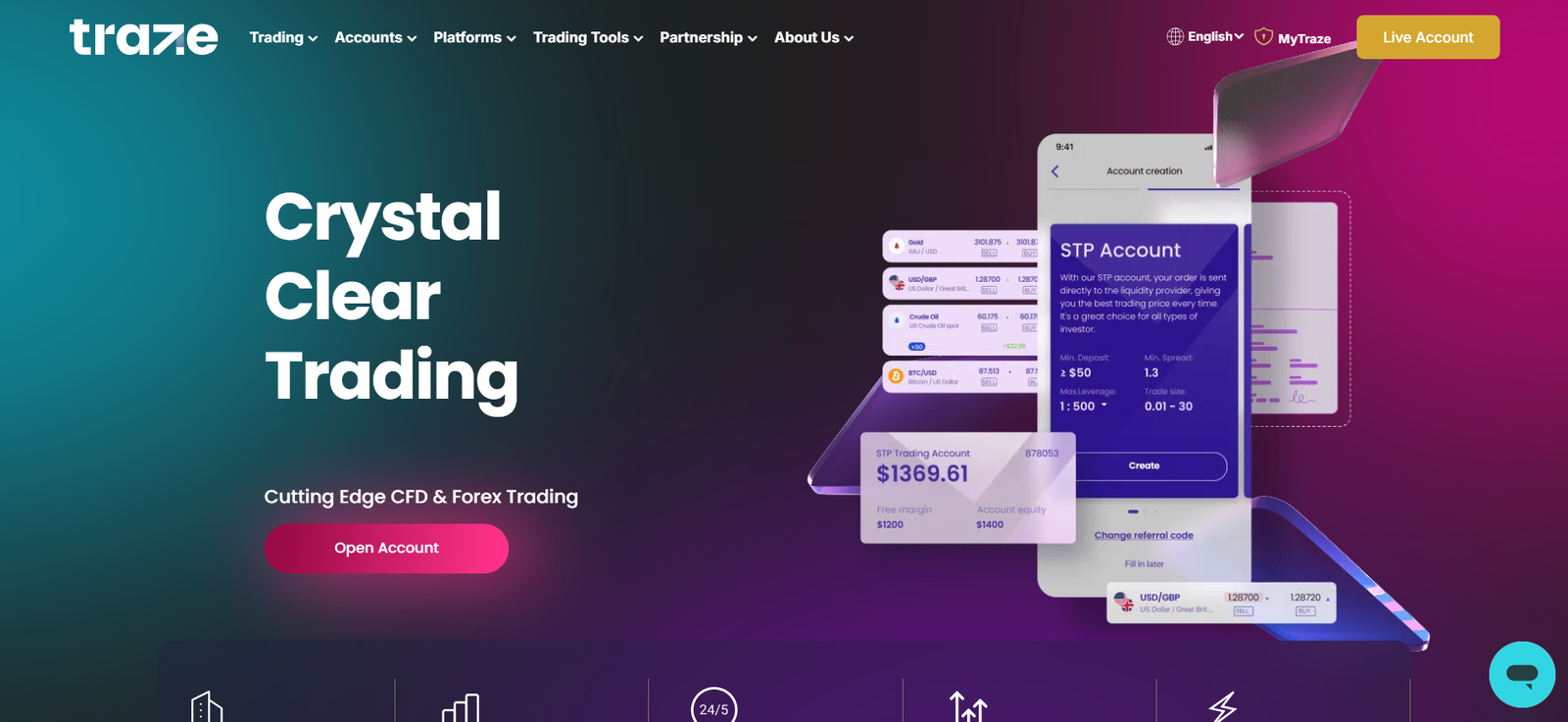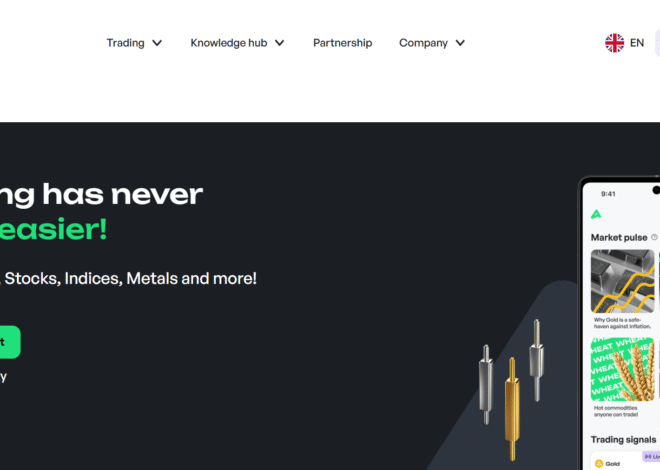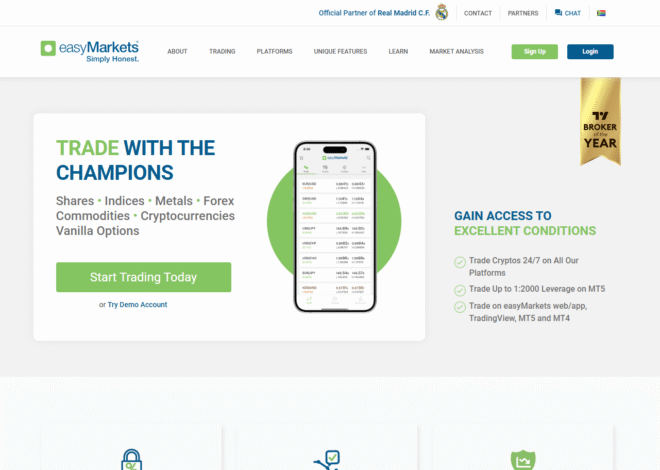
SCAM ALERT: Traze Exposed – Read This Urgent Warning
The digital age has opened up unprecedented opportunities for financial growth, yet it has simultaneously paved the way for sophisticated scams designed to defraud unsuspecting investors. In this landscape, platforms promising quick riches often emerge, only to leave a trail of devastated individuals. Our investigative team has turned its attention to Traze, a broker platform that has increasingly drawn scrutiny from concerned users and financial watchdogs alike. This comprehensive exposé aims to dissect the alarming red flags associated with Traze, from its questionable regulatory standing to a torrent of user complaints detailing severe withdrawal problems and deceptive practices. If you are considering investing with Traze, or if you already have funds tied up with them, this article serves as a critical, urgent warning. We delve into the evidence, revealing patterns that are eerily consistent with known financial fraud operations.
Regulatory Warnings and Compliance Issues
One of the most immediate and glaring red flags surrounding Traze is its ambiguous and often non-existent regulatory status. In the legitimate financial world, brokers are required by law to be licensed and regulated by reputable authorities to ensure investor protection and fair trading practices. The absence of such oversight or the display of misleading regulatory claims is a fundamental breach of trust and a strong indicator of potential illicit activity.
Unlicensed Operations and Jurisdictional Ambiguity
Our investigation found no verifiable evidence that Traze holds a legitimate license from any major, recognized financial regulatory body. While the platform may claim to operate globally or in specific regions, these claims often dissolve under scrutiny. Legitimate brokers proudly display their license numbers, the names of their regulatory authorities (e.g., FCA, ASIC, CySEC), and their registration details prominently on their websites. Traze, however, appears to lack this transparency. Instead, it often presents vague statements about its operational scope or lists obscure, non-existent, or self-appointed “regulators” that hold no real authority. This deliberate obfuscation is a classic tactic used by unregulated entities to avoid accountability and operate outside the purview of consumer protection laws. Investors dealing with an unlicensed broker like Traze have virtually no legal recourse if something goes wrong, making their funds extremely vulnerable.
Lack of Transparency in Corporate Structure
Beyond regulatory licenses, a legitimate financial entity provides clear information about its corporate structure, including its registered address, parent company, and key personnel. This transparency allows for due diligence and establishes accountability. With Traze, such information is conspicuously absent or incredibly difficult to verify. Our research indicates a deliberate veil of secrecy surrounding who precisely owns and operates the platform. This lack of transparency makes it impossible for investors to understand who they are truly dealing with, raising serious questions about the platform’s legitimacy and the integrity of its operations. The inability to identify the beneficial owners or the true operational base of Traze is a significant red flag, suggesting an intentional effort to evade identification and legal responsibility. This is a common characteristic of boiler-room operations and outright scams.
Analysis of User Complaints: A Pattern of Deception
The most compelling evidence against Traze comes from the growing volume of user complaints across various independent review platforms, consumer protection forums, and social media channels. These complaints, often detailed and consistent, paint a grim picture of a platform that prioritizes taking deposits over facilitating legitimate trading or withdrawals. The sheer volume and similarity of these grievances cannot be dismissed as isolated incidents; they represent a systemic pattern of deceptive practices.
Difficulty in Account Closure and Fund Access
A recurring theme in user feedback about Traze is the immense difficulty, if not outright impossibility, of closing accounts and accessing invested funds. Users report navigating a labyrinth of unresponsive customer service, unexplained delays, and arbitrary requirements when attempting to withdraw their money. Initial small withdrawals might be processed to build trust, but as soon as larger sums are requested, the process grinds to a halt. Account managers, initially eager to assist with deposits, become elusive or stonewall withdrawal requests with fabricated excuses. This tactic is designed to frustrate users into giving up, effectively trapping their capital within the platform. Many users describe being pressured to deposit more funds to “unlock” withdrawals, a classic scam technique known as a recovery scam.
Aggressive Sales Tactics and Unsolicited Calls
Numerous reports highlight Traze‘s use of highly aggressive and persistent sales tactics. Users describe receiving unsolicited calls from “account managers” or “financial advisors” who employ high-pressure sales pitches, promising unrealistic returns and guaranteed profits. These individuals often use manipulative language, exploiting investors’ hopes and fears. They may claim to have insider information or exclusive trading strategies that will ensure success, pressuring individuals to deposit significant sums quickly. Once funds are deposited, the pressure often continues, with advisors urging clients to invest more, often into increasingly risky assets. This aggressive approach, coupled with a lack of transparency and a focus solely on deposits, is a hallmark of fraudulent schemes that prioritize extracting maximum funds from victims. You can learn more about how to identify such tactics by reviewing common scam indicators [Internal Link to How to Spot a Trading Scam].
Deceptive Marketing Tactics and False Promises
Traze appears to employ a range of deceptive marketing tactics designed to lure in unsuspecting investors. These tactics often involve fabricating success stories, making unsubstantiated claims about returns, and leveraging misleading information to create an illusion of legitimacy and profitability.
Guaranteed Returns and Misleading Performance Claims
A cornerstone of Traze‘s alleged deceptive marketing is the promise of guaranteed high returns with minimal risk. In the volatile world of financial trading, such guarantees are not only unrealistic but also a definitive red flag. Legitimate financial institutions are legally prohibited from promising guaranteed returns because all investments carry inherent risks. Traze, however, seems to disregard this fundamental principle, using enticing but false claims to attract novice investors who may not understand the complexities of financial markets. The platform’s promotional materials often showcase fabricated charts, impressive but fake performance histories, and cherry-picked testimonials that do not reflect the true user experience. These misleading claims are designed to create a false sense of security and encourage large deposits.
Fake Testimonials and Influencer Endorsements
Further investigation suggests that Traze may utilize fabricated testimonials and potentially paid or unwitting influencer endorsements to bolster its credibility. Online reviews and promotional content sometimes feature glowing praise from individuals whose identities are difficult to verify or appear to be stock photos. These “success stories” often lack specific details and mirror the generic language found in many scam operations. The use of social media influencers, who may not fully understand the platform’s operations or regulatory standing, further extends the reach of these deceptive claims, lending an undeserved air of legitimacy to Traze. Investors should be extremely wary of platforms that rely heavily on generic positive reviews or unverified endorsements, especially when actual user experiences tell a different story. For guidance on protecting yourself, consider resources from reputable consumer protection agencies. [Internal Link to Guide on Online Investment Fraud].
Withdrawal Problems: The Ultimate Red Flag for Traze Users
Perhaps the most damning evidence against Traze is the widespread and consistent reports of severe withdrawal problems. This issue is not merely an inconvenience; it is a critical indicator of a fraudulent operation. When a broker repeatedly prevents clients from accessing their own funds, it signals that the platform may not have the liquidity it claims, or worse, has no intention of returning the money.
Prolonged Delays and Unexplained Fees
Users attempting to withdraw funds from Traze frequently report facing prolonged and inexplicable delays. What should be a straightforward process often turns into weeks or months of waiting, with customer service providing vague excuses or no response at all. When withdrawals are eventually processed, if at all, users often discover their funds have been significantly reduced by an array of previously undisclosed and unjustified fees. These “processing fees,” “dormancy fees,” or “commission adjustments” are often fabricated to reduce the payout amount or to act as a deterrent to future withdrawal attempts. Such tactics are designed to wear down the user’s resolve and maximize the amount of money retained by the platform.
Complete Refusal to Process Payouts
The most egregious reports indicate that Traze often outright refuses to process legitimate withdrawal requests. Users who have invested substantial amounts report being completely locked out of their accounts, having their requests denied without a valid reason, or being met with complete radio silence from the platform’s support channels. In some cases, accounts are suddenly closed, or communication is abruptly cut off once a significant withdrawal is attempted. This absolute refusal to return clients’ capital is the clearest sign of a scam. It demonstrates that the platform’s primary goal is not to facilitate trading but to acquire and retain investor funds through deceptive means. Many victims share their experiences on platforms like Trustpilot or dedicated scam forums, detailing their struggles with Traze.
The Cycle of Despair: From Investment to Loss
The typical journey for a Traze victim often begins with an enticing offer, followed by deposits, perhaps a few small “successful” trades or withdrawals to build confidence, and then a relentless push for larger investments. Once a significant sum is invested, the withdrawal issues begin. Users are often told they need to deposit more money for “tax purposes,” “regulatory fees,” or to “unlock” their funds – these are all classic recovery scam techniques. This creates a vicious cycle where victims lose even more money in a desperate attempt to retrieve their initial investment, only to find themselves deeper in financial distress. This manipulative pattern is a clear indicator of a fraudulent scheme designed to maximize losses for investors while enriching the operators of Traze.
What to Do If You’ve Been Affected by Traze
If you suspect you have been a victim of Traze or any similar fraudulent trading platform, immediate action is crucial. While recovering funds can be challenging, reporting the incident to the appropriate authorities increases the chances of action being taken against the perpetrators and helps protect others from falling victim.
- Cease All Communication and Deposits: Stop all interaction with Traze and any individuals claiming to represent them. Do not deposit any more money, regardless of the promises or threats made.
- Gather All Evidence: Compile all documentation related to your dealings with Traze. This includes transaction records, emails, chat logs, screenshots of the platform, withdrawal requests, and any communication with their representatives.
- Contact Your Bank/Payment Provider: Immediately inform your bank or the company you used for payments (e.g., credit card, wire transfer service) about the suspected fraud. They may be able to initiate a chargeback or stop further transactions. Be aware that the window for chargebacks is often limited.
- Report to Financial Regulators: File a formal complaint with the financial regulatory bodies in your country and, if possible, in the jurisdiction where Traze claims to operate (even if it’s dubious). Examples include the Financial Conduct Authority (FCA) in the UK or the Australian Securities and Investments Commission (ASIC) in Australia. Even if Traze isn’t directly regulated by them, these agencies often track such complaints.
- Report to Law Enforcement: File a report with your local police department or cybercrime unit. Provide them with all the evidence you have gathered.
- Seek Legal Advice: Consider consulting with a legal professional specializing in financial fraud. They can advise you on potential avenues for recovery, although this can be a complex and expensive process.
- Warn Others: Share your experience on reputable consumer review sites, forums, and social media to help raise awareness and prevent others from becoming victims of Traze.
Conclusion: A Resounding Warning Against Traze
Our extensive investigation into Traze reveals a disturbing pattern of characteristics commonly associated with online trading scams. From its lack of verifiable regulatory oversight and opaque corporate structure to the overwhelming number of user complaints detailing aggressive sales tactics, deceptive marketing, and, most critically, severe and systemic withdrawal problems, the evidence points to a platform that operates with questionable intent. The promise of easy profits quickly gives way to the harsh reality of trapped funds and unresponsive support.
We strongly advise against engaging with Traze in any capacity. The risks associated with this platform are profound, and the likelihood of losing your invested capital is extremely high. Protect your financial well-being by choosing only fully regulated, transparent, and reputable brokers. If you have already interacted with Traze, take immediate steps to report your experience to relevant authorities and consumer protection agencies. Your vigilance can help expose these fraudulent operations and safeguard the broader investment community. Do not let Traze add you to its growing list of victims.
External Links Reference Table
| Anchor Text | URL |
|---|---|
| Financial Conduct Authority (FCA) | https://www.fca.org.uk/contact/report-scam-firm |
| Australian Securities and Investments Commission (ASIC) | https://asic.gov.au/about-asic/contact-us/report-a-breach-or-misconduct/ |
| Reuters article on investment fraud trends | https://www.reuters.com/business/finance/global-investment-fraud-surges-digital-platforms-2023-11-15/ |


